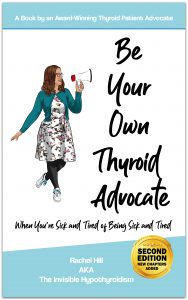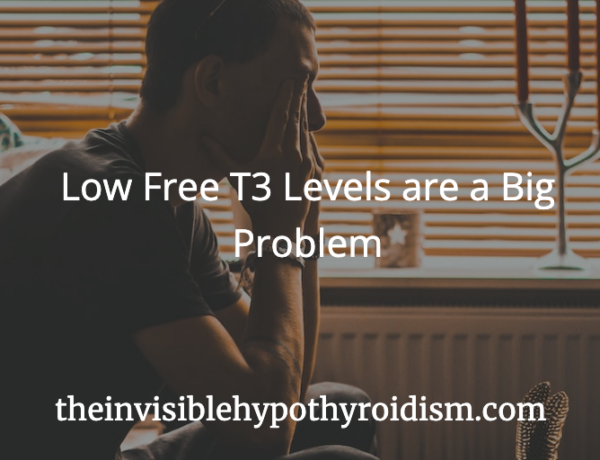Originally published on 29th June 2019 Last updated on 15th July 2024
Finding the right kind of exercise as a thyroid patient is incredibly important. Care should be taken with physical activity when you live with endocrine issues such as hypothyroidism, Hashimoto’s and/or adrenal dysfunction, as too much exercise or the wrong kind can exacerbate these conditions and cause you to feel worse.
So how do you find what is actually going to improve your health and not send it backwards?
Exercising with Thyroid Disease Can be Difficult
Exercising with thyroid disease can prove difficult and if you used to be a very active person before the onset of your thyroid condition, it can be hard to accept that your exercise regimen may need to change so as not to make yourself more unwell.
- Do you ever feel flarey, dizzy or lightheaded with exercise?
- Or as if you have poor stamina or poor ability to withstand much exercise?
- Do your arms ever feel like dead weights after exercising?
- Or do you experience frequent shin splints when you attempt exercise?
Common thyroid symptoms include: fatigue, heart palpitations, less stamina and long recovery periods following activity, so it is understandable therefore, that the ability to withstand exercise can be affected.
However, many thyroid patients do find that their ability to tolerate exercise, and a range of exercise too, improves with time, as their thyroid condition become more well-managed and medication is fine-tuned.
But if you’re in the thick of it now, or you’re a thyroid patient whose ability to exercise is still being affected years in to medication, you’re not alone. Many also experience ongoing struggles with this. So what can you do?
Step 1: Be Careful Not to Over Exercise
Understanding the importance of slowing down and listening to your body should be understated. No two thyroid patients are the same, but we can all benefit from going at our own pace and this is key to understand.
Over exercising is when we push our body too far and this isn’t good for anyone. Neither is doing the wrong type of exercise for your body and abilities.
Think about this: Could you be pushing your body too far and causing more harm than good? Could you actually be hindering your recovery from thyroid symptoms?
Repeatedly engaging in overly demanding exercise can cause a surge of biochemical imbalances to occur within the body, including the disruption of the hypothalamus-pituitary axis, which can affect thyroid function. Intense cardio, marathon training, weight lifting etc. with little to no recovery time can all cause extreme stress to the body, particularly thyroid function. (please note: these are just examples)
When too much cortisol is produced, as can happen when we overexert ourselves, it can inhibit thyroid function and cause adrenal dysfunction, where, even if our thyroid test results look OK, we still feel unwell, with on-going issues and symptoms.
Cortisol will always be produced when we exercise, this is a very normal thing! But what we need to be aware of is if exercise is causing too much to be produced, due to our body feeling very stressed. To know this, we have to pay attention to our body following exercise.
If you exercise, only to find that you physically crash afterwards, feel light-headed and faint, or experience a thyroid flare, then this can indicate that you’re having cortisol issues or that that type, frequency, duration or intensity of exercise is not working for your body right now.
This is where you may need to reevaluate your type of exercise, duration, frequency and intensity. You should can ensure that your blood sugar is kept in mind.
Related Post: 5 Do’s and Dont’s for Exercising With Hypothyroidism and Hashimoto’s
Step 2: Find The Right Exercise for You
Listening to our bodies is crucial and taking things at our own pace will help us to avoid over exercising or doing the wrong kind for our bodies and causing more thyroid flares and ongoing symptoms. After all, we want to live well with thyroid disease and feel healthy and full of life!
Exercise is an important part of a healthy lifestyle and can help us to feel better with a thyroid condition, but it’s important to get the balance right.
Signs that you may need to reevaluate your exercise regimen include:
- Mood swings
- Fatigue that is also long-lasting
- Thyroid flares following exercise
- Loss of muscle
- Blood sugar dips after working out
- Feeling intense muscle weakness and shakiness after working out
- Disrupted sleep
- Mental health conditions such as anxiety and depression
- Brain fog or cognitive issues
- Feeling worse after working out instead of energised
Exercise options that tend to be popular among thyroid patients include: yoga, pilates, swimming, walking, cycling and dancing. However, it really depends on you, your body and where you are in your thyroid health journey.
Avoid for now any exercise that is clearly hindering you, worsening your health, makes any of your thyroid symptoms worse, or is too intensive or high-impact.
As well as the type of exercise, consider how often your body is happy to do it, too. It may not benefit from a 5k run everyday, but a 40-minute walk each day can work really well instead.
You may need to apply some trial and error as you give a few different types of exercise a go and see how your body reacts. You want to be promoting more energy instead of only draining yourself further. You should feel energised and happy after exercise, not worse off.
Always increase intensity and frequency slowly and if your body struggles, listen to it.
We Are All Different
It is obviously crucial to mention here that every person (and every thyroid patient) will be different. We will all have different needs when it comes to exercise, from type of exercise to frequency and intensity. You may well need to experiment with different types and frequencies to see what does and does not work for your body.
As thyroid conditions affect people on a scale, no two experiences are the same and no two bodies will be able to handle the exact same exercise routine. Comments suggesting that we could all manage the same level of exercise “if only we tried hard enough” are unhelpful, as are suggestions that none of us can handle any exercise at all.
Speak to other thyroid patients about their favourite exercises for thriving with thyroid disease, check out what’s on at your local fitness centre or go back to basics and try some simple walking, yoga or swimming.
The time of day can also impact when you exercise. If you find that your blood sugar levels are affected or you have cortisol issues (many of us feel at our worst in the morning), you may find it better to exercise later on in the day, such as at lunchtime or in the afternoon.
What exercise works for you? Let me know below.
Also see: Are You Over Exercising and Worsening Your Thyroid Health?

The book Be Your Own Thyroid Advocate: When You’re Sick and Tired of Being Sick and Tired, which builds on this post and covers how to thrive with hypothyroidism.






